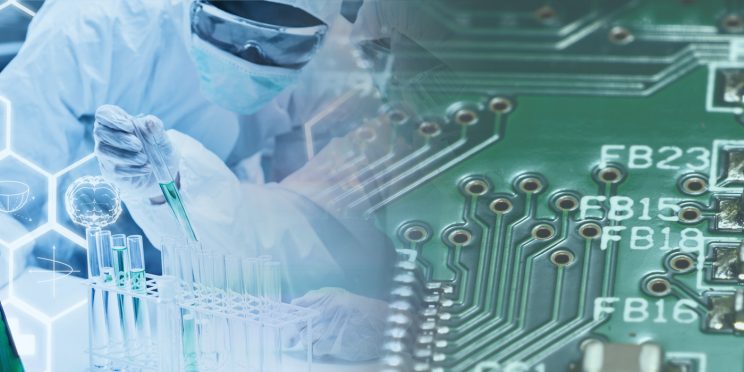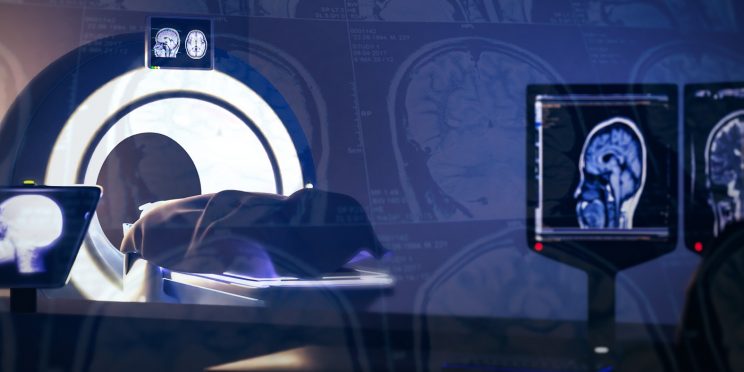This webinar originally occurred on Wednesday, October 21, 2020
Duration: 1 hour
Overview
In the third webinar, participants will learn about the image data included in the New Mexico Decedent Image Database. Post-mortem computed tomography (PMCT) scanning was performed on each decedent included in the database. The resulting image data can be downloaded in DICOM format. The image data for individual decedents is divided into a series, each of which consists of a stack of two-dimensional images (slices) that represent a particular anatomic region (i.e. the head, neck and upper extremities, the torso, or the lower extremities).
Image data are acquired in a spiral trajectory through rotation of the x-ray tube and detector as the subject moves linearly through the scanner. After the CT data was acquired, each image series was reconstructed using a specific combination of algorithm, slice thickness, image plane, filter setting, and default display settings. The reconstruction algorithm, also referred to as the kernel, is optimized for displaying a particular tissue type, such as bone, solid organs, or lung tissue. The slice thickness and slice spacing are typically specified in millimeters. The image data in NMDID was typically reconstructed in both thick slices (3 mm thickness with a 3 mm spacing) and thin slices (1 mm thickness with a 0.5 mm spacing). The natural image plane for CT reconstruction is axial (i.e. planes perpendicular to the long axis of the body); however, some series were reconstructed in sagittal planes (lateral) or coronal planes (anterior-posterior). The reconstruction filter can be chosen to make the image appear sharper (preferred for viewing bone and lung) or smoother (preferred for viewing soft tissue). Each image series has default display settings – i.e., the window width and window level, which are similar to contrast and brightness controls for jpeg images. DICOM images can be viewed using the default display settings, or the window width and window level can be adjusted to the user’s preference. Examples of the effect of these CT reconstruction parameters and display settings on image appearance will be provided.
Participants will learn how to open and view DICOM image series using freely-available software and to recognize the difference between soft tissue and bone reconstructions. The presenters will also cover basic 2D image viewing functions, such as scrolling through the slices in a volume, zooming and panning, and adjusting the display settings. Participants will additionally learn how to open the DICOM header (image metadata) to access detailed information about the image acquisition and image reconstruction parameters.
Participants will be introduced to the Hounsfield Unit (HU) scale, the quantitative gray scale values that correspond to the density of each type of tissue (or foreign body) in the image. While digital photographs are commonly stored using 8 bits per pixel (corresponding to 256 shades of gray), CT data is commonly stored using 12 bits per pixel (4096 shades of gray). Each different shade of gray in a CT image is represented by a number on the HU scale, with -1000 HU corresponding to air (at a density of ~zero g/cc), 0 HU corresponding to water (density = 1 g/cc), and positive HU values (+1 to +3073 HU) corresponding to materials denser than water, such as muscle, blood, or bone. Note that image display settings (window width and window level) are specified using the HU scale.
Finally, participants will learn to perform basic quantitative measurements on 2D images, such as measuring the HU value of a specific pixel, measuring the distance between two points or measuring the angle between two straight lines. Participants will also learn how to select a region of interest (ROI) which may be circular, rectangular, or a free-hand selection. Once an ROI is specified, the circumference or area may be determined, as well as the mean HU value of the region.
Detailed Learning Objectives
- Participants will learn about the image data included in the New Mexico Decedent Image Database.
- Participants will learn how to open and view DICOM image series and to recognize the difference between soft tissue and bone reconstructions.
- Participants will also be introduced to the Hounsfield Unit (HU) scale, the quantitative gray scale values that correspond to the density of each type of tissue in the image.
- Finally, participants will learn to perform basic quantitative measurements on 2D images, such as measuring distance, circumference, angle, or area, and how to determine the mean HU value of a selected region of interest (ROI).
Presenter
- Natalie L. Adolphi, Ph.D. | Director of the Center for Forensic Imaging at the New Mexico Office of the Medical Investigator
Funding for this Forensic Technology Center of Excellence webinar has been provided by the National Institute of Justice, Office of Justice Programs, U.S. Department of Justice.
The opinions, findings, and conclusions or recommendations expressed in this webinar are those of the presenter(s) and do not necessarily reflect those of the U.S. Department of Justice.
Contact us at ForensicCOE@rti.org with any questions and subscribe to our newsletter for notifications.




